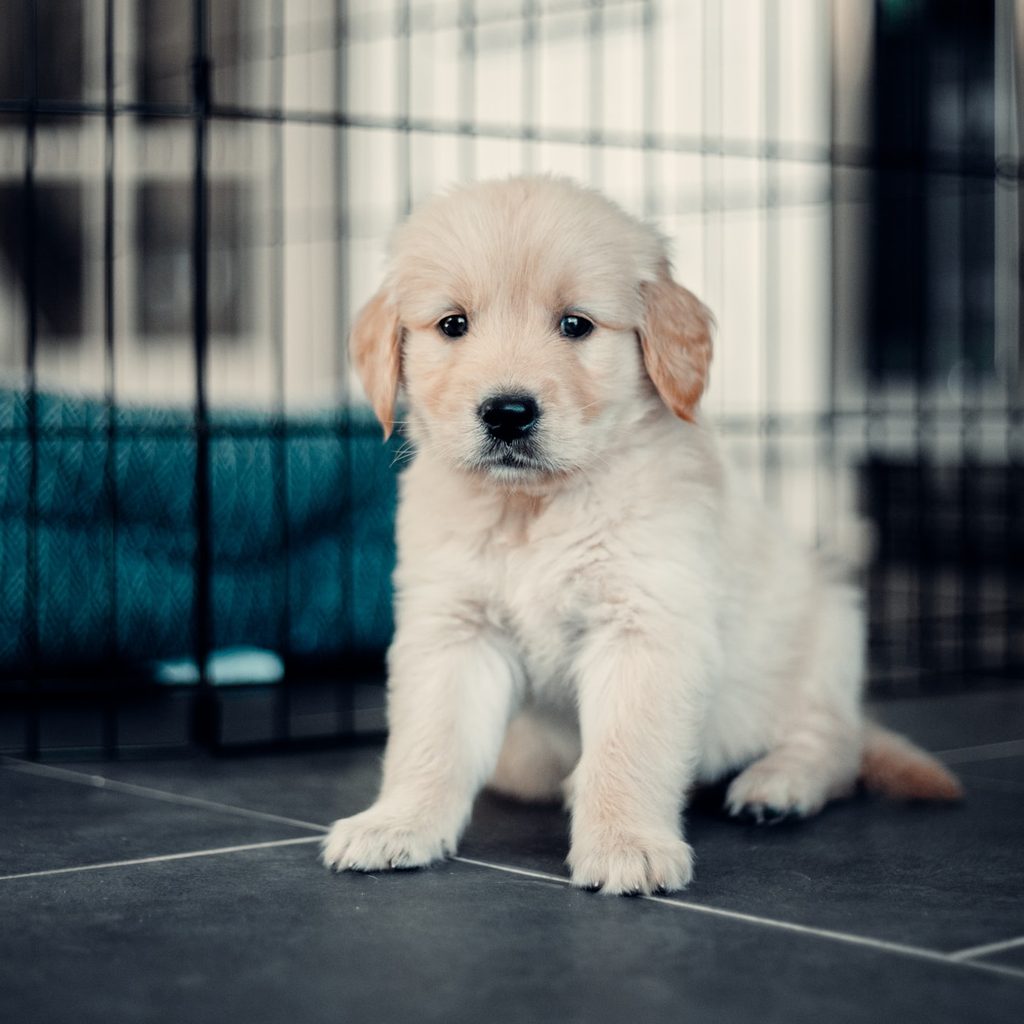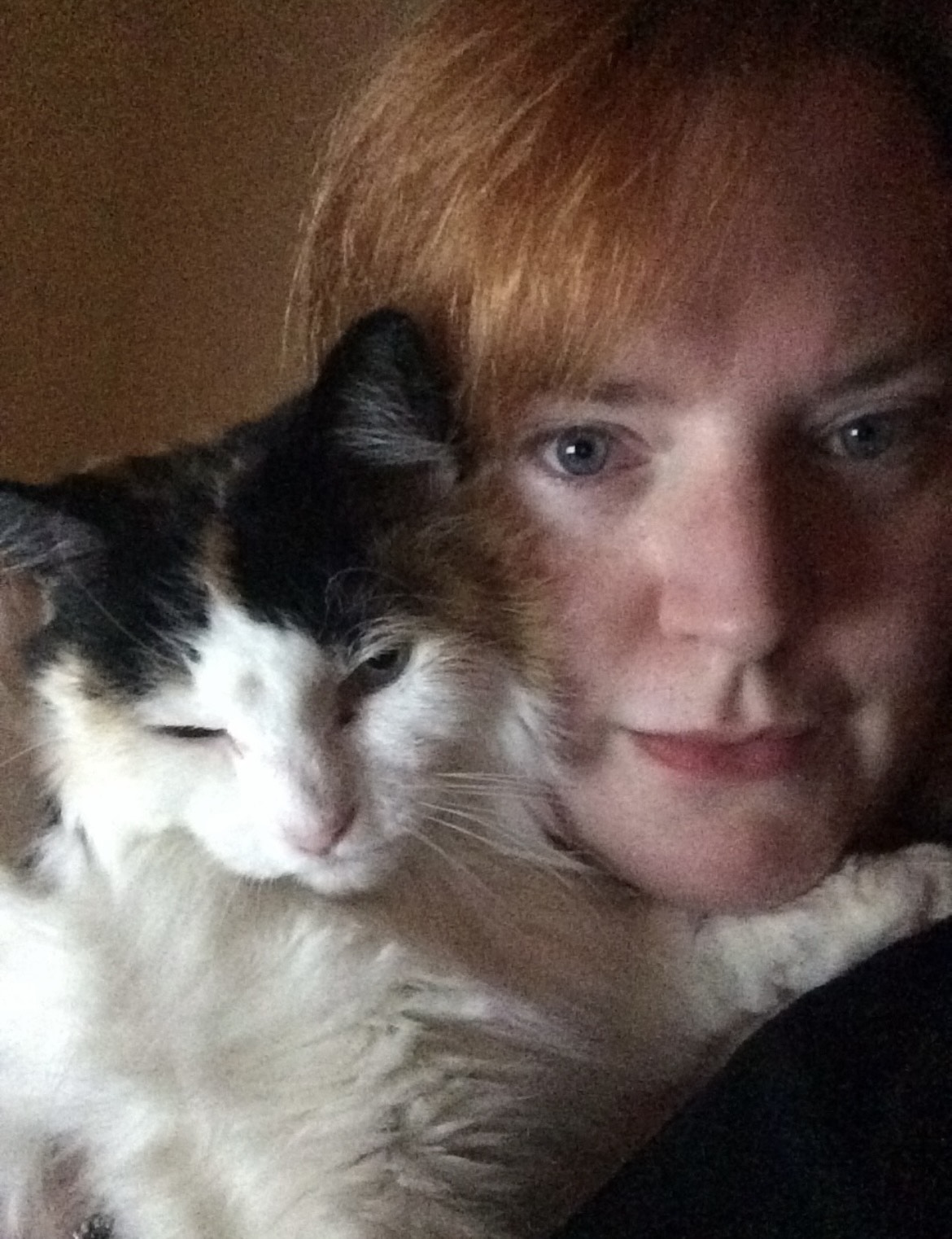Welcoming a new puppy into your home is one of the most exciting and rewarding experiences in any pet parent’s life, but it’s not without its challenges. From puppy-proofing your home to scheduling training sessions, puppies need a lot of extra care.
One way you can make things easier on yourself is by crate training your puppy. While naysayers claim that crating your dog is cruel, studies show that crate training your pup keeps them from causing mischief while you’re away and can also help your new fur baby feel safe and secure in their new home. It's a win-win!
We’re here with expert advice to get you and your puppy off on the right foot with crate training. Here’s what you need to know to get started.

Are 8-week-old puppies easy to crate train?
When puppies are young, they have relatively short attention spans that can sometimes make training an arduous task. On the other hand, puppies can be easier to train than older dogs. While it seems confusing initially, it makes perfect sense when you think about it.
Older dogs, like people, are set in their ways, and you'll probably have to help them unlearn behaviors you find undesirable. Alternatively, puppies are blank slates. They're just beginning to develop their personalities, which makes correcting unwanted behaviors easier.
Just remember to be patient with your puppy! Keep in mind that they doesn't mean to be naughty; just like toddlers and young children, puppies don't realize they're misbehaving. They need you to teach them what's acceptable and what isn't.

Is crate training good for an 8-week-old puppy?
While some pet parents vehemently oppose crate training, there are many benefits to crating your dog when you're not home.
Crate training gives your dog a special space of their own.
According to the AKC, “Although many dog owners may feel guilty for crate training their canine companion, enclosed spaces create a shelter for your dog to rest and relax. In fact, dogs instinctively seek small spaces to create protective shelters for themselves.”
It makes potty training easier.
If you’re still not convinced that crate training is a good idea, never fear. Many veterinarians and dog trainers recommend crate training your pup, especially during potty training. Because dogs don’t like to sleep near their own excrement, crate training can help you housebreak your puppy much faster than training your pup without a crate.
Crate training keeps your puppy safe while you're away.
Crate training your new pup also helps keep them out of trouble while you’re away from home. Even if you've puppy-proofed your home, young puppies can still create chaos while you’re out of the house.

Crate training made easy
While crate training your puppy is beneficial in myriad ways, it pays to remember that they can’t hold their bladder indefinitely. Your puppy can remain in their crate for the same number of hours as their age in months plus one. That means an 8-week-old puppy can stay in their crate for a maximum of 2.5 to 3 hours at a time.
Here's how to make crate training your new puppy an easy, enjoyable process.
Step 1: Choose the perfect crate.
When it comes to selecting a crate, you have lots of options. If you intend to continue crating your pup when they've grown, you may want to choose a crate that's large enough to accommodate their size as an adult.
If the crate is really large, your puppy may potty at one end, so you may need to put a divider in the crate while they're still little, and adjust as they grow. The crate should be big enough for your puppy to be able to stand up and turn around comfortably.
Step 2: Make sure the crate is homey.
You want your puppy’s crate to be a space they enjoy spending time in. You can fill their crate with a dog bed and cozy blankets — just make sure they don't chew on them. You can also put some of their favorite toys in the crate. You want your puppy to have positive associations with the crate, after all!
Step 3: Start slowly.
It’s best not to start off by leaving your pup alone for the full 3 hours until you know how they react to being crated. Try setting up a camera to keep an eye on your pup while you make a quick run to grab coffee.
Additionally, you should never leave your pup in the crate while they're wearing a collar or harness, as the tags could get caught up in the crate’s bars. Once your puppy can handle being left alone for an hour, you can stretch it out to 2 hours, and then you can try leaving your puppy alone for the full 3 hours. Take your time!
Step 4: Reward your puppy.
While most dogs are thrilled with a treat, it’s important to spend time playing with your puppy and praising them for being a good dog. Studies show that dogs actually prefer attention to treats when it comes to being rewarded.
Step 5: Have patience.
According to the AKC, you can expect crate training to take up to a full six months. Some puppies will learn to enjoy their crate much sooner, but others might need more time to adjust. Be patient with your puppy during the learning process. Your fur baby is doing their best!

Should all dogs be crate trained?
While veterinarians and trainers alike agree that crate training your dog can create a sense of safety, there are a couple of caveats you may want to keep in mind. According to the Human Society of the United States, puppies under 6 months of age should only be crated for 2 to 3 hours at a time. Because young puppies can't control their bladders or bowels for long periods, you'll want to make sure your pup has the chance to go outside every few hours.
Additionally, dogs with separation anxiety shouldn't be crated until their anxiety is under control. A dog suffering from an anxiety attack is already panicked, so they may attempt to escape their crate to reach you, which could lead to injury. We recommend speaking to your vet if you have any doubts about whether crating is right for your dog.

If needed, there are alternatives for crate training a puppy
Even though many veterinarians and dog trainers recommend crate training a puppy, the reality is that it doesn't work out for everyone. Luckily, there are a few alternative strategies to help keep your young dog contained and out of trouble when they need to be.
Dog gates are a great way to limit your pup to part of the house, or even part of a room. You can find a gate that sits in a doorway if you'll be walking in and out frequently, or you can invest in a playpen-style enclosure for smaller puppies. At 8 weeks old, your fur baby will be best off in a smaller space where they can't get lost or stuck anywhere.
If your pup struggles to be left alone in any type of enclosure, it may be wise to find a dog sitter or doggie day care to watch your new pet. This option is pricier, but you'll have the peace of mind knowing that your puppy is supervised and safe.
Crate training your pup has numerous benefits, but the most significant is the safety crating provides. Make sure they have everything they need to be comfortable, monitor their activities while you’re away, and be patient with your puppy during training. Not only does training mean you’ll have a well-mannered dog, but it’s also a fantastic bonding experience.




